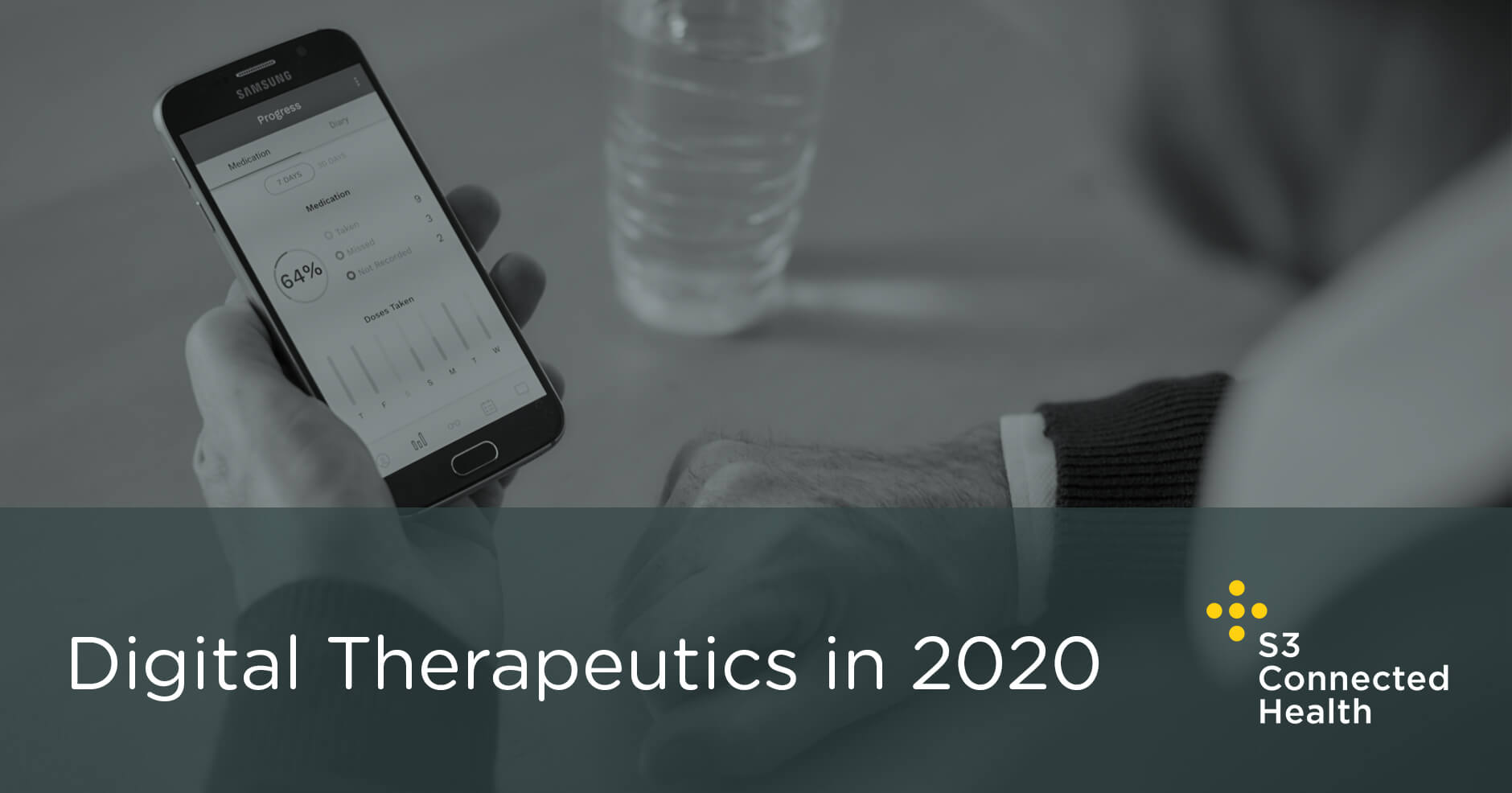As this year’s crop of ‘2020 trends for pharma’ articles flood our inboxes, it seems that digital therapeutics (DTx) is popping up everywhere; considering the momentum it gained throughout 2019, this is unsurprising. This time last year digital therapeutics was rarely mentioned, yet in less than twelve months the term has evolved to become almost synonymous with digital health.
Some of the main pharma events later in 2019, such as Frontier’s Health Berlin, focused heavily on digital therapeutics. Yet at eyeforpharma Barcelona 2019 it wasn’t featured at all. Fast-forward to eyeforpharma Barcelona 2020 and there will be an entire stage and track dedicated solely to digital therapeutics.
In November of 2019, the Digital Therapeutics Alliance (DTA) released their definitions of digital health, digital medicine, and digital therapeutics. The definitions were well received at the time and seem to have brought some clarity. While they have set the ball rolling on separating medical, evidence-based digital health solutions from wellness-type apps, 2020 will determine whether we will see widespread adoption and use of the definitions in the industry or if more refinement is needed. The growing number of member companies in the DTA also hints at how it is becoming more relevant. Will we start to see medtech move into this space in 2020?
Also in November 2019, we saw one of the most significant digital health announcements of the year when the federal parliament in Germany passed the Digital Care Act (DVG). Doctors can now prescribe apps, which can be reimbursed by German statutory health insurance. In December, Express scripts announced the addition of fifteen clinically validated digital health programs in the inaugural cohort of its digital health formulary; the first such resource from a pharmacy benefits manager. Despite these huge steps forward, hurdles to reimbursement remain throughout the rest of Europe and the US. It’s clear that outcome-based reimbursement models are most definitely still in the future for many insurers.
2020 is sure to see plenty of discussion on the regulation of digital therapeutics. There’s an increasing call for a quicker process for approval of digital health solutions including digital therapeutics. It will be interesting to see if and when the lengthy review process inherited from traditional pharma can be replaced with a more fit-for-purpose process that considers the modern pace of digital innovation.
With the global market for digital therapeutics expected to grow to almost $9 billion by 2025, up from just under $2 billion in 2017, 2020 is shaping up to be the year of digital therapeutics.
Adoption and use of digital therapeutics (DTx) in 2020
While payors and providers remain a crucial consideration when developing digital therapeutics, there is sure to be continued focus on doctors and patients; who remain key players if new solutions are to be adopted and make a meaningful impact on healthcare outcomes. Pharma firms need to avoid the pitfalls of previous initiatives in this area and make strategic decisions that lead to meaningful, adoptable solutions. Considering all stakeholders from the start and developing a solution that addresses real unmet needs will be vital for success.
Personalization is becoming an increasingly important feature to consider for adoption and usability. ‘One size fits all’ models are no longer good enough for modern users, who now expect the same level of personalization and customization in their health products as they get from consumer tech. The looming threat of big tech is strong, as Amazon, Apple, Google, and more move into the digital health space. Of course, patient data security is of chief concern here. Data breaches and improper transfer of private data involving tech giants featured more than once in 2019. Google came under scrutiny after the transfer of the personal medical data of up to 50 million Americans – without their knowledge – from Ascension, the second largest healthcare provider in the US. Similarly, speculation around the US tech giant’s acquisition of Fitbit suggests access to the data of millions of users of the fitness wearables was one of the main motivations.
While questions around data management in big tech remain, perhaps partnerships between tech giants, pharma, and existing digital therapeutics companies is the answer? For now, the healthy competition may drive faster innovation in this space but should not come at the expense of privacy.
See Jim O’Donoghue’s final article in his digital therapeutics series with PharmaTimes in 2019 for practical advice on developing digital therapeutics. Jim discusses strategy, securing internal buy-in, and how to plan for adoption from the start when creating digital therapeutics.
For a more in-depth look at digital therapeutics, download our whitepaper: ‘Digital Therapeutics: pharma’s threat or opportunity.’


